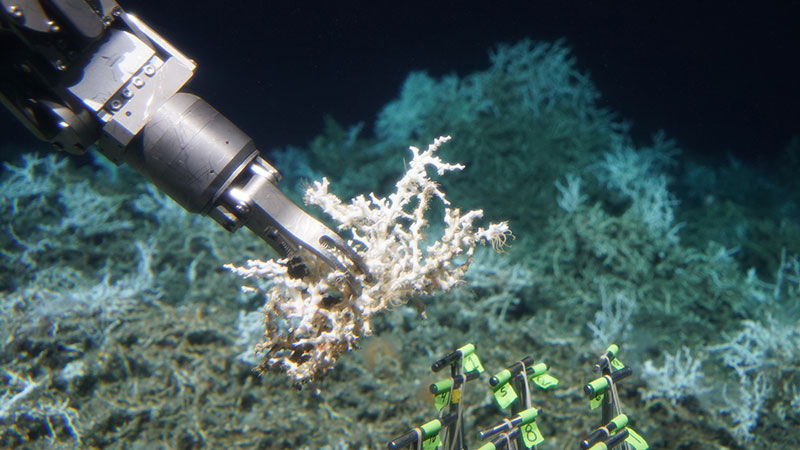September 5, 2020: Sample Collection

Image copyright Woods Hole Oceanographic Institution. Download larger version (jpg, 5.1 MB).
Human occupied vehicle Alvin collects a sample of Lophelia pertusa from an extensive mound of both dead and live coral during a DEEP SEARCH 2018: DEEP Sea Exploration to Advance Research on Coral/Canyon/Cold seep Habitats expedition dive.
In 2018, 160 miles off the coast of Charleston, South Carolina, the expedition team observed these extensive Lophelia reefs. While Lophelia reefs are known to occur off the coasts of Florida to North Carolina at depths averaging 350-600 meters (1,150-1,970 feet), the presence of these reefs at deeper depths (greater than 700 meters or 2,300 feet) and farther offshore make these newly observed reefs unique, potentially connecting deep-sea coral habitats from the south to the north. Connected reefs can be more resilient to environmental change, thus this extensive reef complex might help to improve the overall health of deep-sea corals off the East Coast and in the larger Atlantic ecosystem.
From: Dive Three: Exciting Finds on Our First Coral Dive!